Rear differential fluid change
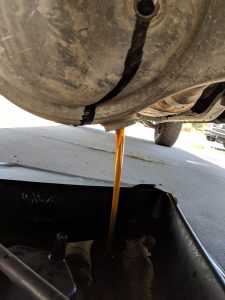 A rear differential fluid change is good maintenance if you do a decent amount of towing. Depending on how often you tow a trailer, a rear differential fluid change should occur every 30,000 miles or so. People are good about keeping up with engine oil, and transmission oil, but differentials rarely get touched. In fact, I would bet most people never change it over the life of most cars they own. On a truck, a lot of heat gets put into the rear differential while towing, and although it’s not common to blow out a rear differential, changing the oil is cheap insurance and is very easy to do. I just changed out the rear differential oil on my 2008 Toyota Tundra with 145,000 miles and took pics along the way to show how easy it is.
A rear differential fluid change is good maintenance if you do a decent amount of towing. Depending on how often you tow a trailer, a rear differential fluid change should occur every 30,000 miles or so. People are good about keeping up with engine oil, and transmission oil, but differentials rarely get touched. In fact, I would bet most people never change it over the life of most cars they own. On a truck, a lot of heat gets put into the rear differential while towing, and although it’s not common to blow out a rear differential, changing the oil is cheap insurance and is very easy to do. I just changed out the rear differential oil on my 2008 Toyota Tundra with 145,000 miles and took pics along the way to show how easy it is.
Tools and oil
A differential fluid change is a pretty straight forward job. You don’t need to jack up the back of the truck and the oil fill and drain bolts are easy to get to. I did the change on my 2008 Toyota Tundra with 145,000 miles on it and ~25,000 miles since the last differential oil change I did. On top of getting the oil, I bought new crush washers from Toyota, the rest of the tools I used I already had.
Differential Oil
For the rear differential fluid, I chose Royal Purple Max Gear 75W90 Synthetic. I think I might have used Mobil 1 last time, it was just what was available at the time. The manual says the capacity of the rear on my truck takes 3.75 quarts, so 4 bottles will do the trick.
Crush Washers
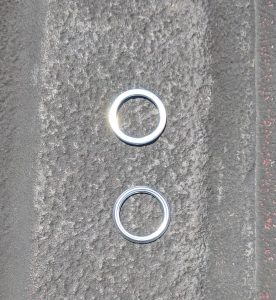 The only other part that I bought besides the oil was new crush washers. These are one-time use washers that go over the bolts of the fill and drain bolts in the differential. I was told by my local auto parts store they could match them up if I brought them in, but I wanted to have them on hand beforehand. For a 2008 Toyota Tundra, the part number is 12157-10010.
The only other part that I bought besides the oil was new crush washers. These are one-time use washers that go over the bolts of the fill and drain bolts in the differential. I was told by my local auto parts store they could match them up if I brought them in, but I wanted to have them on hand beforehand. For a 2008 Toyota Tundra, the part number is 12157-10010.
Tools
The tools needed are common garage tools, no specialty tools needed. I had all the tools in my garage between working on my truck and dirt bikes doing oil changes.
- Torque wrench
- 23mm socket or 15/16 inch
- Disposable gloves
- Oil drain pan and funnel
- Drip pan
Setup and access
 On most pickup trucks, the rear differential has good access to it. You don’t need to jack the rear up and the only thing that might be in the way is an under the mounted spare tire. I used a drip pan and an oil drain pan on top of each other. The drip pan is useful for placing the drain plugs on and any tools that get some oil on them. Differential fluid is pretty thick and tends to smell like rotten eggs, so working with a clean area and wearing gloves helps.
On most pickup trucks, the rear differential has good access to it. You don’t need to jack the rear up and the only thing that might be in the way is an under the mounted spare tire. I used a drip pan and an oil drain pan on top of each other. The drip pan is useful for placing the drain plugs on and any tools that get some oil on them. Differential fluid is pretty thick and tends to smell like rotten eggs, so working with a clean area and wearing gloves helps.
Drain plugs
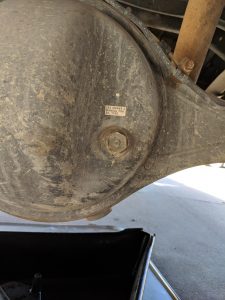 There are 2 common designs for rear differentials. One design the gears are accessed through the back of the differential, and the second, they are accessed from the front. My 2008 Toyota Tundra has the first version, with the gears accessed from the front and the oil drain and fill plugs located on the back and bottom of the rear differential.
There are 2 common designs for rear differentials. One design the gears are accessed through the back of the differential, and the second, they are accessed from the front. My 2008 Toyota Tundra has the first version, with the gears accessed from the front and the oil drain and fill plugs located on the back and bottom of the rear differential.
If you have the other style, which has a cover on the back of the differential, you have 2 options for draining the differential fluid. The first option is to take off the rear cover. This will allow for full draining but is messy and will require resealing the cover. Another option is to use an oil syringe to suck the oil out of the fill hole. I’ve used this option when I did a differential fluid change on my 2002 Jeep Wrangler.
Draining the oil
- Removed fill plug
- Drain plug removed
- Differential fluid change Oil slowly draining at the end
Remove the fill plug and drain plug and let the oil drain for a 5 minutes or so. It’s not uncommon for the fluid to come out clear, or just a little cloudy. Differential fluid breaks down by becoming less viscous(thinner) and does not have contaminants as motor oil does. Let the oil drain until it is slowly dripping.
Drain Plug Cleaning
The drain plug differs from the fill plug by having a magnet in it. The magnet collects metal flakes and fine metal particles in the oil. The metal collects on the plug like sludge and needs cleaning off before reinstalling. Also, replace the crush washers at this point.
- Fill plug Top Drain plug Bottom
- Replace crush washers
- Cleaned magnet on drain plug
Install the drain plug
 Install the drain plug, the bottom plug, and torque to 36 foot pounds.
Install the drain plug, the bottom plug, and torque to 36 foot pounds.
Filling the differential
The fill hole is also used as a level indicator for the oil. To set the level, overfill the differential and let the excess oil drain out. There are a couple of ways you can do this. Some people cut the top of the oil bottle and squeeze the oil in one at a time. You can also buy and pump that connects right to the bottle and pump the oil in. After doing this a couple of times, I ended up using a funnel with a valve on it to fill the differential. I ended up zip tying it to the bottom of my bed and pouring the oil in. On my 2008 Toyota Tundra, the manual specs 3.75 quarts. I basically just dumped the full 4 quarts in and let the excess drain out.
- Oil Fill hose
- Funnel zip tied to bed
- Oil full
- Let excess drain out
Install fill plug and check for leaks
After giving the oil time to level out and stop dripping, install the fill plug to 36-foot-pounds and wipe down the differential. Take out your truck for a drive to get the oil up to temperature and check for leaks. And that’s it, you’re done with a differential fluid change, and hopefully, as a result, saved some money at the same time. You can bring the used oil to a local auto parts store for recycling.
- Check fill plug for leaks
- Check drain plug for leaks
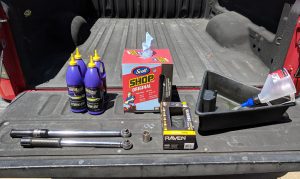
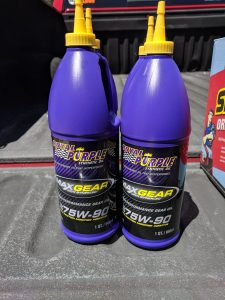
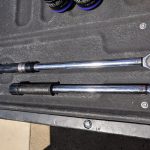
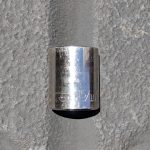
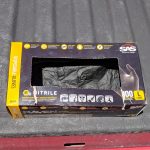
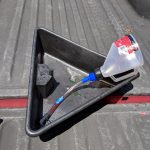
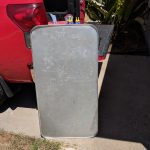
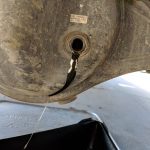
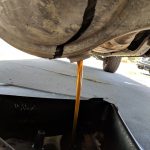
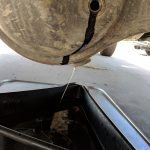
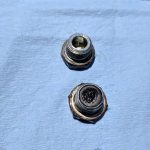
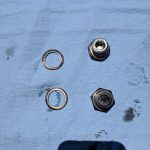
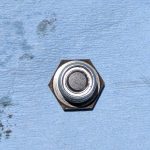
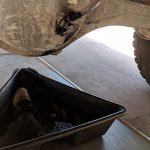
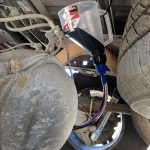
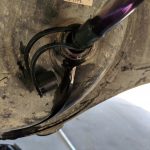
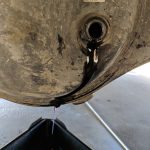
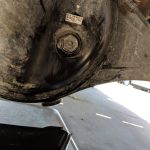
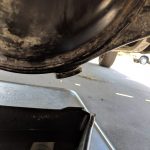
Hello, this is very informative. The only thing I wish you had covered is how to level the truck prior to the fluid change .
My driveway is pretty level so I didn’t really do much else to level my truck.